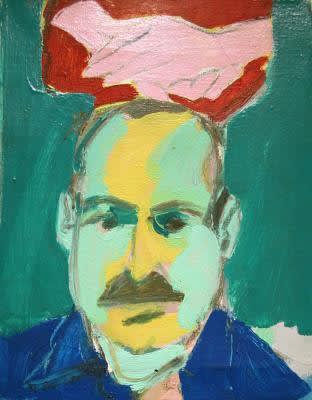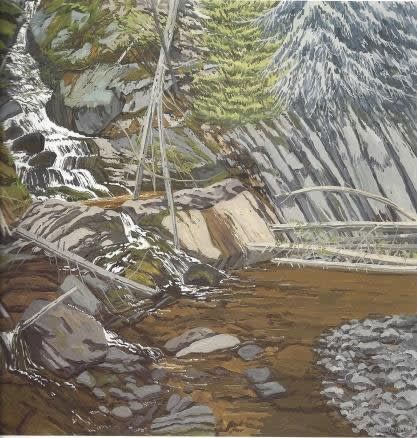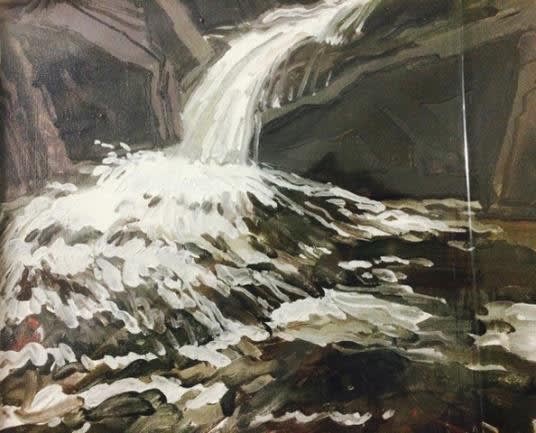"I celebrate nature, I am nature…"
– Neil Welliver
Neil Welliver was one of America's leading landscape painters. His large paintings of the Maine woods evolved from his appreciation of both traditional landscape painters of the nineteenth century and the abstract expressionists of his generation. Welliver was born in 1929, during the Depression, and grew up in the lumber town of Millville, Pennsylvania. He spent much of his childhood watching his grandfather, a cabinet-maker, craft furniture.
Like many other young men, Welliver dreamed of becoming a fireman, a pilot or an engineer, but he chose, instead, to pursue a career as a painter and educator. After graduating from the Philadelphia College of Art, Welliver received his MFA at Yale, where abstract artists Josef Albers and Burgoyne Diller had a profound influence on his work.
Welliver taught at Cooper Union, at Yale, and eventually became chairman of the University of Pennsylvania Graduate School of Fine Art.
Painting in the Wilderness
Welliver moved to Lincolnville, Maine in 1970. It was there that he began to walk through the woods, find a spot that spoke to him, and do a study of the site. He would carry a backpack that held an easel, paints, brushes, turpentine, water, binoculars and other necessities. Welliver said that the backpack weighed 70 pounds.
"Painting outside in winter is not a macho thing to do." Welliver said, in an interview with writer Edwin Denby, "It's much more difficult than that. To paint outside in the winter is painful. It hurts your hands, it hurts your feet, it hurts your ears. Painting is difficult. The paint is rigid, it's stiff, it doesn't move easily. But sometimes there are things you want and that's the only way you get them."
After creating his studies, Welliver would go back to his studio and transform them into landscapes. He would start at the top left-hand corner of the canvas and work his way down to the bottom right. He would spend weeks, using a wet-on-wet technique, to get the colors and atmosphere of the place just right. Welliver searched for, and painted, what he called "places of power."
"Welliver's huge paintings of the Maine woods are among the strongest images in modern American art," the critic Robert Hughes wrote in Time magazine, adding that the paintings contain "an emotional intensity that goes beyond the ordinary limits of realism."
Welliver's works are included in the permanent collections of many major museums, including the Hirshhorn Museum and Sculpture Garden, the Metropolitan Museum of Art, the Museum of Modern Art and Boston's Museum of Fine Arts.
Neil Welliver's Works at Surovek Gallery
At Surovek Gallery, we have examples of both Neil Welliver's studies and large oils. Please contact us for more information about Bear Hole Runlet, Bear Hole or any of the other fine works available in our gallery.
References:
Rizzoli, D. Skira. Welliver, RIZZOLI International Publications, 1985
Jacket 21. Neil Welliver in conversation with Edwin Denby. February 2003
Matt Schudel. Neil Welliver, 75, Dies; Maine Landscape Painter. Washington Post, April 9, 2005


